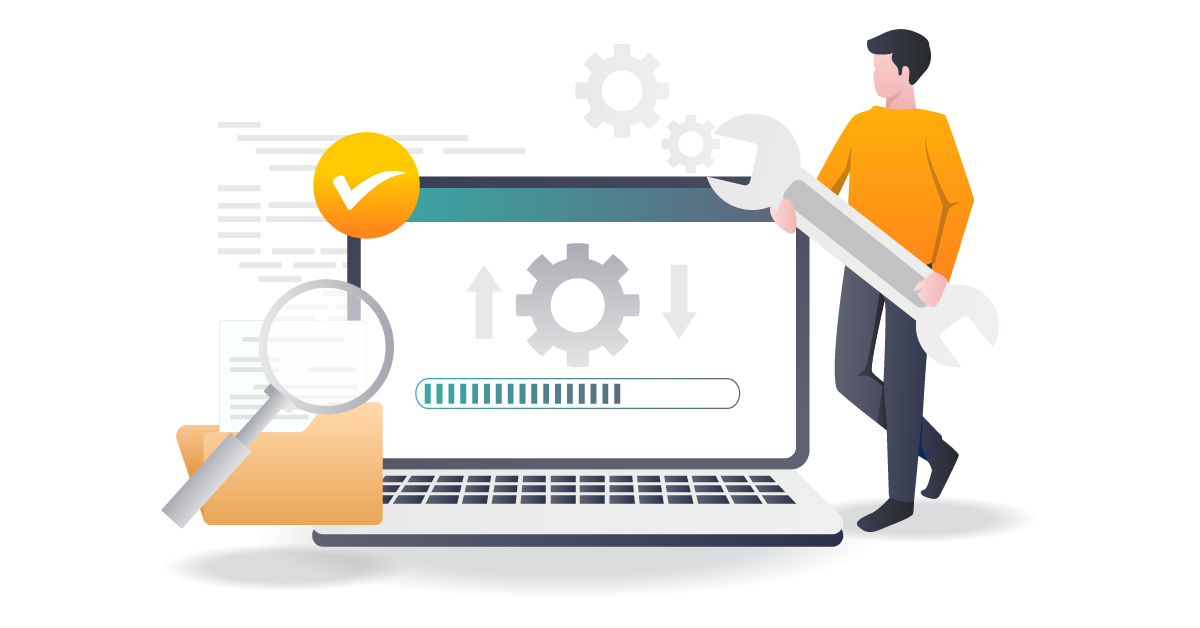4 min read

In today’s digital world, having a high-performing website is crucial for businesses, organizations, and individuals alike. A website that loads quickly, functions smoothly, and provides an exceptional user experience can significantly impact the success of an online presence. However, many website owners underestimate the importance of regular maintenance for achieving and maintaining optimal performance. In this blog post, we will explore the various aspects of website maintenance and how it can boost the performance of your website.
Table of Contents
Website Maintenance
Website maintenance refers to the ongoing process of monitoring, updating, and optimizing your website to ensure it remains secure, functional, and up-to-date. It involves several tasks, including regular backups, software updates, performance optimization, security checks, content updates, and more. By regularly maintaining your website design and maintenance, you can address potential issues proactively and keep your site running smoothly.
The Importance of Regular Website Maintenance
Regular website maintenance services play a crucial role in boosting performance and providing an excellent user experience. Here are some reasons why it is essential:
2.1 Enhanced Security
A well-maintained website is less susceptible to security breaches and hacking attempts. Regular updates to your content management system (CMS), plugins, and themes help patch vulnerabilities and protect your site from potential threats. By keeping everything up-to-date, you reduce the risk of unauthorized access, data breaches, and other security issues that could harm your website’s performance.
2.2 Improved Website Speed
Website speed is a vital factor that significantly impacts the user experience and search engine rankings. Regular maintenance allows you to optimize your website’s performance by minimizing file sizes, optimizing images, cleaning up unnecessary code, and implementing caching mechanisms. By improving your site’s speed, you can reduce bounce rates, increase conversions, and provide a better overall user experience.
2.3 Better Search Engine Rankings
Search engines prioritize websites that are well-maintained and regularly updated with fresh content. By consistently performing website design and maintenance tasks such as updating meta tags, fixing broken links, and improving site structure, you can enhance your search engine optimization (SEO) efforts. As a result, your website’s visibility in search engine results pages (SERPs) will improve, leading to increased organic traffic and better performance.
2.4 Enhanced User Experience
A well-maintained website provides a seamless user experience. Which is critical for keeping visitors engaged and encouraging them to take desired actions. Regular maintenance ensures that all website features are functioning correctly, links are not broken, forms are working as intended, and content is up-to-date. By focusing on the user experience aspect of maintenance! You can create a positive impression on visitors and boost overall performance.
2.5 Increased Conversion Rates
A high-performing website with a smooth user experience tends to have higher conversion rates. When visitors find it easy to navigate your site, quickly access the information they need, and complete desired actions such as making a purchase or submitting a form. They have a greater chance of becoming leads or customers. Regular maintenance helps identify and fix any barriers that may hinder conversions. Ultimately boosting your website’s performance in terms of conversion rates.
Key Website Maintenance Tasks
3.1 Regular Backups
Regularly backing up your website is essential to protect against data loss or potential disasters. Backups allow you to restore your site quickly in case of any unforeseen events. Such as server crashes, malware attacks, or accidental deletion of content. It is advisable to automate the backup process and store backups in multiple locations for added security.
3.2 Software Updates
Keeping your CMS platform, plugins, themes, and any other software up-to-date is vital for maintaining a secure and high-performing website. Developers release updates regularly to address security vulnerabilities, fix bugs, improve performance, and introduce new features. Failing to update your software can leave your site vulnerable to attacks and may result in compatibility issues or performance degradation.
3.3 Performance Optimization
Optimizing your website for better performance is an ongoing task that should be part of regular maintenance. This includes tasks such as compressing images without sacrificing quality, minifying CSS and JavaScript files, enabling browser caching, reducing server response time, and utilizing content delivery networks (CDNs). By optimizing performance, you can ensure faster page load times and an improved user experience.
3.4 Security Checks
Regular security checks help identify vulnerabilities on your website and prevent potential security breaches. This involves scanning for malware or suspicious code injections, checking file permissions, monitoring login attempts, and implementing strong password policies. By staying proactive with security measures through regular checks, you can protect sensitive data and maintain the integrity of your website.
3.5 Content Updates
Keeping the content on your website up to date and pertinent is essential for drawing in visitors and improving search engine rankings. Regularly update your blog posts, product descriptions, news sections, and other content areas. Additionally, review and revise outdated information or incorrect details that may affect the user experience or credibility.
Read More: Top Programming Languages You Need for Web Development in 2024
Best Practices for Website Maintenance
4.1 Create a Maintenance Schedule
To ensure regularity in maintaining your website, create a maintenance schedule outlining specific tasks to be performed daily, weekly, monthly, or quarterly. Assign responsibilities to team members or consider hiring professionals who specialize in website support and maintenance.
4.2 Test Website Functionality
Regularly test your website’s support and maintenance functionality across different devices and browsers to ensure it works seamlessly for all users. Check for broken links, forms that are not submitting properly, slow-loading pages. Also need to check any other issues that may negatively impact the user experience.
4.3 Monitor Website Analytics
Use web analytics tools like Google Analytics to monitor key performance metrics such as page views, bounce rates, average session duration, and conversion rates. Analyzing these metrics regularly can help identify areas for improvement and guide future maintenance efforts.
4.4 Stay Informed About Updates
Keep yourself updated about the latest software updates for your CMS platform, plugins, themes, and other components of your website. Subscribe to newsletters or follow the official blogs of the software providers to stay informed about security patches, bug fixes, or new features.
4.5 Regularly Review Website Security
Perform periodic security audits to identify potential vulnerabilities or outdated security measures on your website. Consider implementing additional security measures like SSL certificates or web application firewalls (WAFs) to enhance protection against cyber threats.
Conclusion
Regular website maintenance is not just an optional task; it is vital for boosting the performance of your site. By investing time and effort into maintaining your website properly, you can enhance security measures, improve loading speed, achieve higher search engine rankings, provide an exceptional user experience, and increase conversion rates. Remember that regular maintenance is an ongoing process. It requires consistent effort but offers long-term benefits for the success of boosting your online presence.
Published: February 1st, 2024




